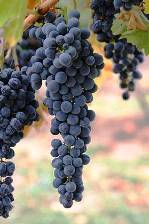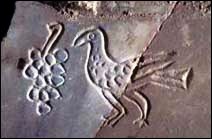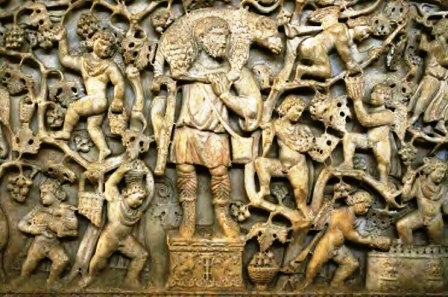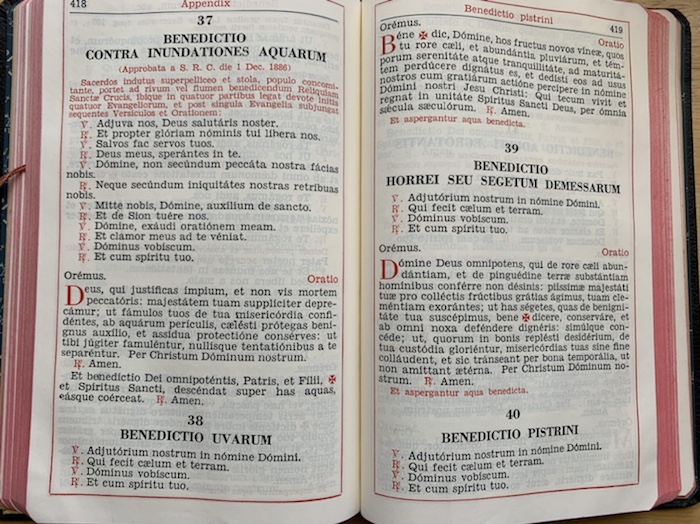 The Roman calendar has many little treasures which remind us of how our Faith and the Church’s calendar, the rhythm of temporal and spiritual life, are integrated in our seasons.
The Roman calendar has many little treasures which remind us of how our Faith and the Church’s calendar, the rhythm of temporal and spiritual life, are integrated in our seasons.
Today, for example, the Feast of the Transfiguration of the Lord, there is a special blessing of grapes in the traditional Rituale Romanum. The powers that be, some of them at least, want to take this away from people. It is not found in the “BOB” or “Book of Blessings… De Benedictionibus“. In its index, “Grapes” are relegated to “new fruits” on the feast of the Presentation. Don’t let them take away our heritage.
You might consider that title, “Transfiguration of Grapes” a little dramatic. However, consider that the vast majority of grapes grown went to wine, their individual leap to collective glory.
In the Transfiguration, Our Lord let something of His glory shine forth through His human body. In wine, in advance we detect something of the joy of the heavenly banquet, remembering that, just as grapes are crushed to make wine, our Lord had His Passion. As the Golden Legend say, “the blood of Christ is renewed of new wine if it may be founden of a ripe grape”.
We also have to have our Passion, collectively as a Church, and individually. There is no escaping the Passion. Do not listen to those who posit anything Christian that avoids the Passion.
If truth be told, the blessing of grapes at this time seems to be attached more to the Feast of St. Sixtus II, martyred in 258 with his famous companions. The Feast of the Transfiguration came to be observed centuries later in the Roman calendar.
But who cares? The more the merrier! We are Catholics. That means we are both/and rather than either/or when it comes to these happy events.
Back to Sixtus. At the beginning of August we Romans remember the martyrs Pope Saint Sixtus and his four deacon companions. St. Lawrence would famously follow, burned on an iron grate. For that see St. Ambrose. HERE This is the time of year with the first grapes of the harvest are blessed. Together with the Transfiguration of our Lord, the blessing of grapes – an eschatological symbol – shows that Holy Church is already in the end time, though we wait for its completion. And it sure feels like the end times.
Here is the translation for the blessing of grapes, for those who don’t have Latin:
V. Our help is in the name of the Lord.
R. Who hath made heaven and earth.
V. The Lord be with you.
R. And with thy spirit.Let us pray.
Bless, we beseech Thee, O Lord, this fresh fruit of the vine,
which Thou hast graciously brought to full ripeness
with the dew of heaven, abundant rain, and calm and fair weather.
Thou hast given them for our use;
grant that we may receive them with thanksgiving
in the name of our Lord Jesus Christ, the True Vine,
who liveth and reigneth with Thee in the unity of the Holy Ghost,
God for ever and ever.
R. Amen.(And they are sprinkled with holy water.)
I was delighted by the reference to “dew of heaven… rore caeli“. You might recall the controversy over the reference to “dew” when the new, corrected English translation of the Novus Ordo was being prepared.
The cultivation of certain types of grapes requires special conditions. In a contrast to the benefits of dew lauded in the prayer of the blessing, however, dew isn’t always good for grapes. Dew helps fungus to get hold, through in the case of some grapes, certain fungi are welcome, as in the case of the “noble rot” in a very late harvest which produces wines of a spectacular sweetness and depth. Also, it is important to harvest grapes after dissipation of dew. But certainly the evocation of dew in the prayer refers to the necessary moisture grapes need for their proper development. And of course, dew is a Scriptural image for the descent of God with graces.
The coming of and effects of the Holy Spirit, in Scripture and in the Fathers of the Church, are often described not by fire imagery, but rather by water images and, indeed, dew.
First, ros can come from above like rain. Second, ros is dew which forms nearly imperceptibly. In one case, rain flows across a thing and washes it. Dew slowly dampens. In both cases there results a penetrating soaking. Arid ground yields to planting. Seeds germinate and sprout. The ros Spiritus in the (artificially cobbled up and inaccurately called ancient) 2nd Eucharistic Prayer can be both the cleansing and the moistening.
Our Catholic doctrine of sanctification teaches us that at baptism a person is both justified and sanctified by the washing/indwelling of the Holy Spirit. That sanctification can be deepened through the course of one’s life. It comes suddenly. It comes gradually.
In Scripture the psalmist sings about the “King of Justice”. “May he be like rain (Vulgate ros) that falls on the mown grass, like showers that water the earth!” (Ps 72:6 RSV).
In the Song of Songs, we hear, “Open to me, my sister, my love, my dove, my perfect one; for my head is wet with dew (ros), my locks with the drops of the night. By night I have put off my coat, how shall I put it on? I have washed my feet, how shall I defile them” (Cant 5:2-3). St. Augustine (+430) saw in the lover and beloved an image of Christ calling His ministerial Church to service.
From Isaiah we have an image which has come into the Latin Church’s liturgy, namely, “Rorate caeli desuper … Shower (rorate), O heavens, from above, and let the skies rain down righteousness; let the earth open, that salvation may sprout forth, and let it cause righteousness to spring up also; I the LORD have created it” (Is 45:8 Vulgate and RSV – Introit 4th Sunday of Advent).
The Fathers made much of ros through an allegorical technique of interpretation. Origen (+254), via Rufinus’ translation of the Homilies on the Book of Judges (8.5) says: “But we also, if only we might offer our feet, the Lord Jesus is ready to wash the feet of our soul and cleanse them with a heavenly washing (rore caelesti), by the grace of the Holy Spirit, by the word of sacred doctrine.”
Saint Ambrose of Milan (+397), who drew much upon Origen’s writings as a starting point, in his work on the Holy Spirit wrote: “The Holy Scriptures were promising to us this rainfall (pluvia) of the whole world, which watered the orb under the coming of the Lord, in the falling dew of the divine Spirit (Spiritus rore divini)” (De spiritu sancto 1.8).
 The imagery of grapes is also Scriptural. The immediate association for Catholics is the Eucharist. But grapes symbolize the end times. They have an eschatological import. In Revelation 14:19-20 we have an image of the end times and judgment when the grapes of wrath are pressed in the winepress:
The imagery of grapes is also Scriptural. The immediate association for Catholics is the Eucharist. But grapes symbolize the end times. They have an eschatological import. In Revelation 14:19-20 we have an image of the end times and judgment when the grapes of wrath are pressed in the winepress:
And the angel thrust in his sharp sickle into the earth and gathered the vineyard of the earth and cast it into the great press of the wrath of God: And the press was trodden without the city, and blood came out of the press, up to the horses’ bridles, for a thousand and six hundred furlongs.
Of course the image of grapes is a happy one as well… obviously. From the ancient Roman Church grapes are found in carvings in the catacombs and on sarcophagus reliefs. Bunches of ripe grapes are symbols of completion, that the season has finally brought things to fruition. Grapes remind us that Christ is the Vine, whence all our life and hope flows out to us, His branches and tendrils.
 In those ancient depictions we sometimes see the harvest of grapes, which is the happy completion of life. For example there is the relief of the famous 4th c. sarcophagus with the Good Shepherd from the Catacombs of Praetextatus which shows a harvest. In the Catacomb of Priscilla there is a 4th century carving of a dove eating grapes, the dove being a symbol of the Christian soul and grapes the happy attainment of the goal of fullness in due time, heaven. Remember that reference, above, to the dove from the Song of Songs? It all fits together. You can right-click on that image of the Good Shepherd for a larger view.
In those ancient depictions we sometimes see the harvest of grapes, which is the happy completion of life. For example there is the relief of the famous 4th c. sarcophagus with the Good Shepherd from the Catacombs of Praetextatus which shows a harvest. In the Catacomb of Priscilla there is a 4th century carving of a dove eating grapes, the dove being a symbol of the Christian soul and grapes the happy attainment of the goal of fullness in due time, heaven. Remember that reference, above, to the dove from the Song of Songs? It all fits together. You can right-click on that image of the Good Shepherd for a larger view.
Grapes remind us that we shall be known from the fruits we both bear and we generate for the benefit of others.
Grapes remind us that we should not be sour grapes for others.
Grapes remind us that, if we do not live our vocations as the Lord’s branches well, then the grapes may be those of wrath, though mercy and forgiveness is what the Lord offers those who fall.
So, get your grapes and get them blessed, today, if you can.
When you eat them consider:
- how good God has been to you, even if some of the grapes are bitter;
- whether or not, through the dew of God’s graces and the light He shines on you, you are developing well for your own eternal salvation;
- whether or not you are producing fruits for the benefit of others, hopefully sweet fruits and not sour.



































Excellent post, Father. Thank you!
In the Orthodox Church, we also bless grapes today, making me think the tradition must be quite ancient. By way of comparison, our prayer is:
“Bless, O Lord, this new fruit of the vine, which Thou hast graciously been pleased to permit to come to maturity, through calm seasons and gentle rains and favorable weather, and let it be unto joy for those of us who shall partake of this offspring of the vine; and may we offer it as a gift to Thee unto the purification of our sins, through the sacred and holy Body and Blood of Thy Christ, with whom Thou art blessed, together with Thine all-holy and good and life-creating Spirit, now and ever, and unto ages of ages. Amen.”
I watched the Divine Liturgy today presided over by an orthodox priest of America. At the end of the liturgy he blessed the fruit that was brought to the church, among which was grapes. He mentioned the grapes are the transfiguration.
We love posts like this. Fr. Z you know so much about these things and have so much great Catholic information. A book of these celebrations and background would be really nice to have. You have lots of knowledge about these things and I’d like to celebrate these things and try to incorporate them into our lives. There are at least five books you could write. This seems like one. I can imagine the photographs and great content already.
I don’t know why but I’ve had eyes full of tears while reading this post…
Truly amazing.
I am grateful for every single word.
Deo gratias, Father!
Thank you Fr. Z, great post.
Here’s more on imagery in mosaics, from grapes to palm branches to round or square halos.
https://www.walksofitaly.com/blog/art-culture/byzantine-and-early-christian-mosaics